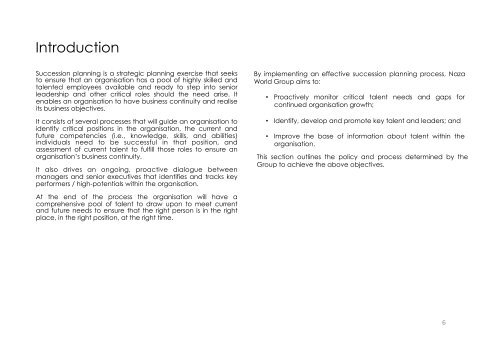Framework Edit 2-2-17
Create successful ePaper yourself
Turn your PDF publications into a flip-book with our unique Google optimized e-Paper software.
Introduction<br />
Succession planning is a strategic planning exercise that seeks<br />
to ensure that an organisation has a pool of highly skilled and<br />
talented employees available and ready to step into senior<br />
leadership and other critical roles should the need arise. It<br />
enables an organisation to have business continuity and realise<br />
its business objectives.<br />
It consists of several processes that will guide an organisation to<br />
identify critical positions in the organisation, the current and<br />
future competencies (i.e., knowledge, skills, and abilities)<br />
individuals need to be successful in that position, and<br />
assessment of current talent to fulfill those roles to ensure an<br />
organisation’s business continuity.<br />
It also drives an ongoing, proactive dialogue between<br />
managers and senior executives that identifies and tracks key<br />
performers / high-potentials within the organisation.<br />
By implementing an effective succession planning process, Naza<br />
World Group aims to:<br />
• Proactively monitor critical talent needs and gaps for<br />
continued organisation growth;<br />
• Identify, develop and promote key talent and leaders; and<br />
• Improve the base of information about talent within the<br />
organisation.<br />
This section outlines the policy and process determined by the<br />
Group to achieve the above objectives.<br />
At the end of the process the organisation will have a<br />
comprehensive pool of talent to draw upon to meet current<br />
and future needs to ensure that the right person is in the right<br />
place, in the right position, at the right time.<br />
6




